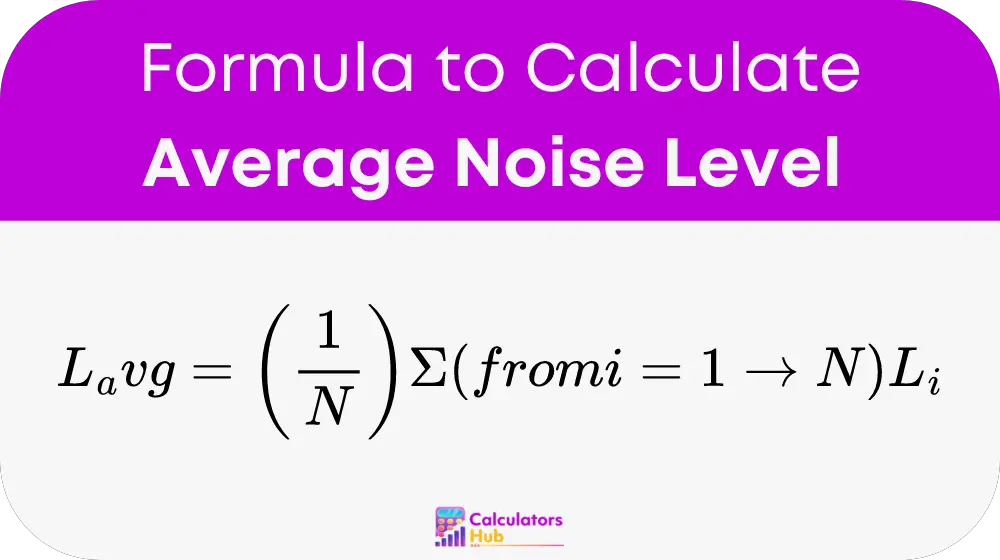The Average Noise Level Calculator simplifies the process of calculating the mean noise level across multiple measurements. This is crucial for accurately assessing environments where noise levels fluctuate, such as in urban areas, factories, or during different times of the day in various settings. Understanding the average noise levels assists in making informed decisions related to health, safety, and environmental policy.
Formula of Average Noise Level Calculator
For linear measurements, the average noise level is calculated as follows:

Where:
- L_avg is the average noise level.
- N is the number of measurements.
- L_i is the noise level measurement at the i-th point.
If measurements are in decibels (dB) and you want to calculate the average in a logarithmic scale, use:
L_avg(dB) = 10 * log10[(1/N) Σ (from i=1 to N) 10^(L_i/10)]
where:
L_avg(dB)is the average noise level in decibelsL_iis the noise level measurement at the i-th point in decibels
General Terms Table
Here is a table of common terms and conversions to help users without having to calculate each time:
| Term | Description | Example Conversion |
|---|---|---|
| dB (decibel) | A unit to measure the intensity of sound | 1 dB = 10 log₁₀(P1/P0) |
| N (Number of Measurements) | The total number of noise level measurements | N = 5 |
| Σ (Summation) | The sum of all noise level measurements | Σ = L1 + L2 + L3 + L4 + L5 |
| L_i (Individual Level) | Noise level measurement at the i-th point | L1 = 60 dB, L2 = 62 dB |
Example of Average Noise Level Calculator
Suppose you have five noise level measurements in decibels: 60 dB, 62 dB, 58 dB, 61 dB, and 59 dB. To calculate the average noise level in a logarithmic scale, follow these steps:
- Convert each measurement from dB to its linear value:
- 10^(60/10) = 1,000,000
- 10^(62/10) = 1,584,893
- 10^(58/10) = 630,957
- 10^(61/10) = 1,258,925
- 10^(59/10) = 794,328
- Sum the linear values:
- Total = 1,000,000 + 1,584,893 + 630,957 + 1,258,925 + 794,328 = 5,269,103
- Divide the sum by the number of measurements (N = 5):
- Average Linear Value = 5,269,103 / 5 = 1,053,821
- Convert the average linear value back to dB:
- L_avg(dB) = 10 * log10(1,053,821) ≈ 60.23 dB
Most Common FAQs
A safe noise level for humans is typically below 70 dB over a prolonged period. Noise levels above 85 dB can cause hearing damage if exposed for extended periods.
You can measure noise levels using a sound level meter, a device specifically designed to capture and display sound intensity in decibels.
Calculating the average noise level helps in assessing the overall impact of noise in a given environment. It is crucial for ensuring compliance with noise regulations and protecting human health.